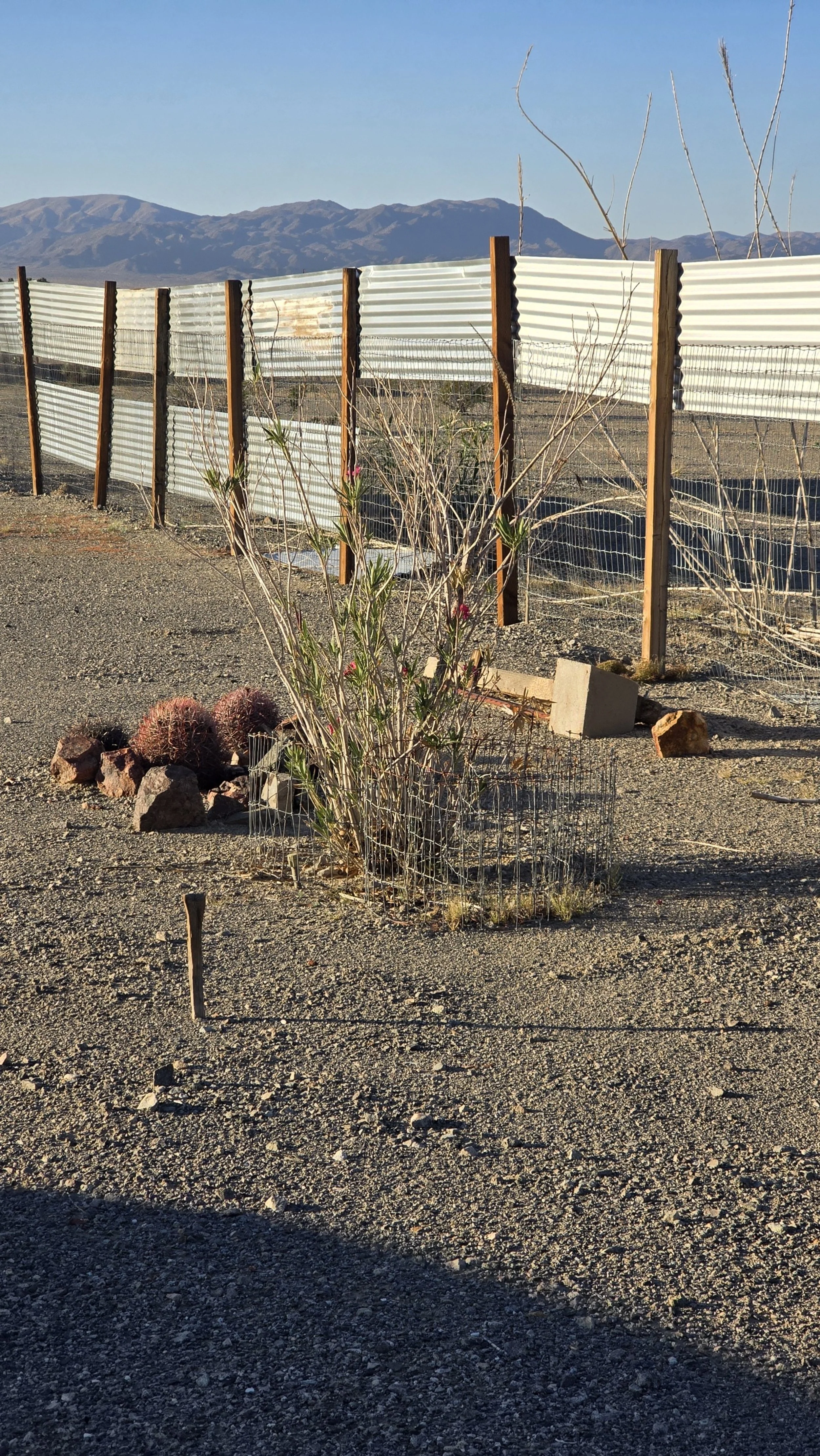Mohave Horticultural Failures
I've seen plenty of people move to the Mojave - especially during the Airbnb boom between 2017-2022 - and try to plant shitty oleander or other horticultural atrocities, and fail miserably. It is just too dry here (average rainfall 4-5", sometimes not even that). There are dead non-native trees everywhere out here, anywhere there is human development.
When you look at the landscape here it begins to make sense : miles of an open ocean of Creosote and the occasional Krameria, maybe a Jojoba or some Desert Lavender (Condea emoryi). Your stupid oleanders never stood a chance. Why should they? They evolved 7,000 miles away.
Luckily there is a large list of really cool plants available that have been built (evolved) to survive the specifically harsh conditions of this desert and the list below is only a fraction of some of them:
Ambrosia salsola - broom-lime shrub that provides good habitat for wildlife.
Asclepias erosa - robust native milkweed to 4-5 ft tall
Ambrosia dumosa - leaves smell incredible
Psorothamnus spinosus - unique shrub that resembles puffs of smoke due to the leafless blue stems
Senna armata - straw-like green shoots that bloom profusely in late fall
Datura wrightii - white trumpet flowers the size of grapefruits that smell incredible and are pollinated by hawk moths
Senegalia greggii - catclaw shrub with flowers that smell like perfume
Peritome arborea - blue leaves and golfball-sized yellow flowers
Condea emoryi - a native lavender with purple flowers that can reach heights of 8'
Pectis papposa - a small annual marigold relative with fragrant leaves
Encelia frutescens - a desert bush "daisy" covered in native bees when it blooms.
Chilopsis linearis (Bignoniaceaw)
Bebbia juncea - (Asteraceae)
But of course - as is too often the case - there is no place for the average schmuck to buy them because none of these plants are viewed as conventionally "attractive" by the bizarre and deranged standards of conventional horticulture, which values things like plants that flower all the time, have varieqated leaves, or can be hedged into neurotic rectangles.
So what is the answer?
We need to change those standards because they make no sense and are discordant with reality. They are rooted in archaic and obsolete 19th century ideas about what plants should look like. We do this not by shaming people but by hyping and embracing all the cool things about these plants : they're sturdy as hell in the extreme conditions they grow in, they support the beneficial insect life that evolved here. That insect life in turn supports the cool animal life that people like having around them, like desert tortoises and birds. These plants resemble the 'nature" and natural areas that attracts people to these regions, they are the living skin of this land - they are the plants that are best-equipped to handle this desert and these extreme conditions. It is illogical to try to plant anything else unless it's a food crop or of some direct and immediate usefulness. You can drive as much irrigation tubing to any of it as you want, it will die because it lacks the drought-tolerance and heat-tolerance strategies that the native plants have evolved, whether it is hairy leaves, waxy leaves, ephemeral roots, storage roots, or controlled leaf drop during drought. This is just about using plants as infrastructure. It is just what makes sense.
Once you start thinking this way, you can take this same outlook and apply it to anywhere, even less extreme, non-desert areas.

